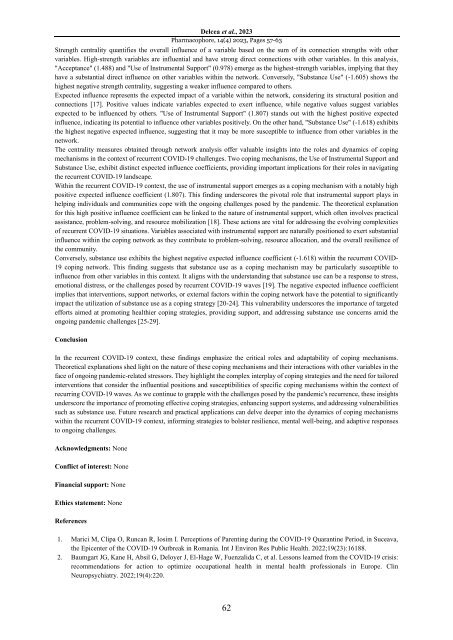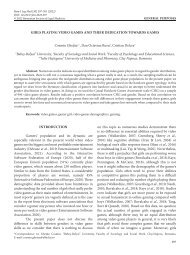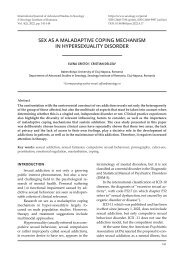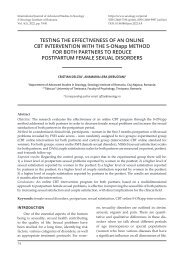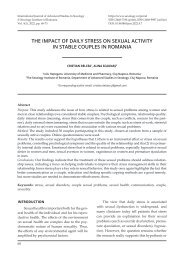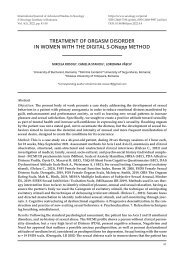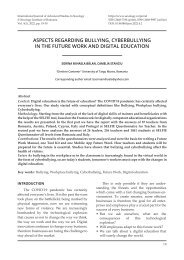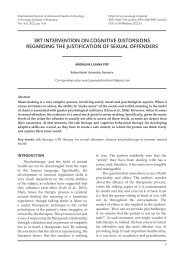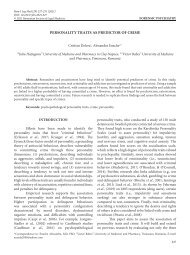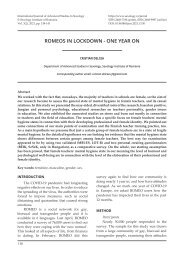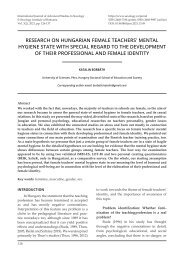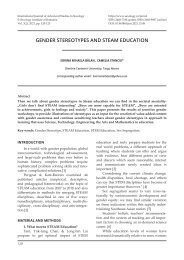A Network Analysis Approach to Romanian Resilience - Coping Mechanisms in the Covid-19 Era
The COVID-19 pandemic has posed unprecedented challenges to individuals worldwide, demanding the rapid development and utilization of coping mechanisms to navigate the recurring waves of uncertainty and disruption. Coping mechanisms are mediated by personality traits, cognitive schemes and developed perceptions. They are activated in states of stress, danger or events such as the COVID-19 period. Our study employing a network analysis approach sheds light on the coping mechanisms utilized during the recurring periods of the COVID era among a convenience sampling of 403 respondents in Romania. The findings highlight that substance use emerges as the most destabilizing factor within the pandemic resilience network, while the use of instrumental support exhibits the highest expected influence, offering valuable insights into the adaptive and maladaptive strategies that shape the Romanian population's resilience during these challenging times.They highlight the complex interplay of coping strategies and the need for tailored interventions that consider the influential positions and susceptibilities of specific coping mechanisms within the context of recurring COVID-19 waves.
The COVID-19 pandemic has posed unprecedented challenges to individuals worldwide, demanding the rapid development and utilization of coping mechanisms to navigate the recurring waves of uncertainty and disruption. Coping mechanisms are mediated by personality traits, cognitive schemes and developed perceptions. They are activated in states of stress, danger or events such as the COVID-19 period. Our study employing a network analysis approach sheds light on the coping mechanisms utilized during the recurring periods of the COVID era among a convenience sampling of 403 respondents in Romania. The findings highlight that substance use emerges as the most destabilizing factor within the pandemic resilience network, while the use of instrumental support exhibits the highest expected influence, offering valuable insights into the adaptive and maladaptive strategies that shape the Romanian population's resilience during these challenging times.They highlight the complex interplay of coping strategies and the need for tailored interventions that consider the influential positions and susceptibilities of specific coping mechanisms within the context of recurring COVID-19 waves.
You also want an ePaper? Increase the reach of your titles
YUMPU automatically turns print PDFs into web optimized ePapers that Google loves.
Delcea et al., 2023<br />
Pharmacophore, 14(4) 2023, Pages 57-63<br />
Strength centrality quantifies <strong>the</strong> overall <strong>in</strong>fluence of a variable based on <strong>the</strong> sum of its connection strengths with o<strong>the</strong>r<br />
variables. High-strength variables are <strong>in</strong>fluential and have strong direct connections with o<strong>the</strong>r variables. In this analysis,<br />
"Acceptance" (1.488) and "Use of Instrumental Support" (0.978) emerge as <strong>the</strong> highest-strength variables, imply<strong>in</strong>g that <strong>the</strong>y<br />
have a substantial direct <strong>in</strong>fluence on o<strong>the</strong>r variables with<strong>in</strong> <strong>the</strong> network. Conversely, "Substance Use" (-1.605) shows <strong>the</strong><br />
highest negative strength centrality, suggest<strong>in</strong>g a weaker <strong>in</strong>fluence compared <strong>to</strong> o<strong>the</strong>rs.<br />
Expected <strong>in</strong>fluence represents <strong>the</strong> expected impact of a variable with<strong>in</strong> <strong>the</strong> network, consider<strong>in</strong>g its structural position and<br />
connections [17]. Positive values <strong>in</strong>dicate variables expected <strong>to</strong> exert <strong>in</strong>fluence, while negative values suggest variables<br />
expected <strong>to</strong> be <strong>in</strong>fluenced by o<strong>the</strong>rs. "Use of Instrumental Support" (1.807) stands out with <strong>the</strong> highest positive expected<br />
<strong>in</strong>fluence, <strong>in</strong>dicat<strong>in</strong>g its potential <strong>to</strong> <strong>in</strong>fluence o<strong>the</strong>r variables positively. On <strong>the</strong> o<strong>the</strong>r hand, "Substance Use" (-1.618) exhibits<br />
<strong>the</strong> highest negative expected <strong>in</strong>fluence, suggest<strong>in</strong>g that it may be more susceptible <strong>to</strong> <strong>in</strong>fluence from o<strong>the</strong>r variables <strong>in</strong> <strong>the</strong><br />
network.<br />
The centrality measures obta<strong>in</strong>ed through network analysis offer valuable <strong>in</strong>sights <strong>in</strong><strong>to</strong> <strong>the</strong> roles and dynamics of cop<strong>in</strong>g<br />
mechanisms <strong>in</strong> <strong>the</strong> context of recurrent COVID-<strong>19</strong> challenges. Two cop<strong>in</strong>g mechanisms, <strong>the</strong> Use of Instrumental Support and<br />
Substance Use, exhibit dist<strong>in</strong>ct expected <strong>in</strong>fluence coefficients, provid<strong>in</strong>g important implications for <strong>the</strong>ir roles <strong>in</strong> navigat<strong>in</strong>g<br />
<strong>the</strong> recurrent COVID-<strong>19</strong> landscape.<br />
With<strong>in</strong> <strong>the</strong> recurrent COVID-<strong>19</strong> context, <strong>the</strong> use of <strong>in</strong>strumental support emerges as a cop<strong>in</strong>g mechanism with a notably high<br />
positive expected <strong>in</strong>fluence coefficient (1.807). This f<strong>in</strong>d<strong>in</strong>g underscores <strong>the</strong> pivotal role that <strong>in</strong>strumental support plays <strong>in</strong><br />
help<strong>in</strong>g <strong>in</strong>dividuals and communities cope with <strong>the</strong> ongo<strong>in</strong>g challenges posed by <strong>the</strong> pandemic. The <strong>the</strong>oretical explanation<br />
for this high positive <strong>in</strong>fluence coefficient can be l<strong>in</strong>ked <strong>to</strong> <strong>the</strong> nature of <strong>in</strong>strumental support, which often <strong>in</strong>volves practical<br />
assistance, problem-solv<strong>in</strong>g, and resource mobilization [18]. These actions are vital for address<strong>in</strong>g <strong>the</strong> evolv<strong>in</strong>g complexities<br />
of recurrent COVID-<strong>19</strong> situations. Variables associated with <strong>in</strong>strumental support are naturally positioned <strong>to</strong> exert substantial<br />
<strong>in</strong>fluence with<strong>in</strong> <strong>the</strong> cop<strong>in</strong>g network as <strong>the</strong>y contribute <strong>to</strong> problem-solv<strong>in</strong>g, resource allocation, and <strong>the</strong> overall resilience of<br />
<strong>the</strong> community.<br />
Conversely, substance use exhibits <strong>the</strong> highest negative expected <strong>in</strong>fluence coefficient (-1.618) with<strong>in</strong> <strong>the</strong> recurrent COVID-<br />
<strong>19</strong> cop<strong>in</strong>g network. This f<strong>in</strong>d<strong>in</strong>g suggests that substance use as a cop<strong>in</strong>g mechanism may be particularly susceptible <strong>to</strong><br />
<strong>in</strong>fluence from o<strong>the</strong>r variables <strong>in</strong> this context. It aligns with <strong>the</strong> understand<strong>in</strong>g that substance use can be a response <strong>to</strong> stress,<br />
emotional distress, or <strong>the</strong> challenges posed by recurrent COVID-<strong>19</strong> waves [<strong>19</strong>]. The negative expected <strong>in</strong>fluence coefficient<br />
implies that <strong>in</strong>terventions, support networks, or external fac<strong>to</strong>rs with<strong>in</strong> <strong>the</strong> cop<strong>in</strong>g network have <strong>the</strong> potential <strong>to</strong> significantly<br />
impact <strong>the</strong> utilization of substance use as a cop<strong>in</strong>g strategy [20-24]. This vulnerability underscores <strong>the</strong> importance of targeted<br />
efforts aimed at promot<strong>in</strong>g healthier cop<strong>in</strong>g strategies, provid<strong>in</strong>g support, and address<strong>in</strong>g substance use concerns amid <strong>the</strong><br />
ongo<strong>in</strong>g pandemic challenges [25-29].<br />
Conclusion<br />
In <strong>the</strong> recurrent COVID-<strong>19</strong> context, <strong>the</strong>se f<strong>in</strong>d<strong>in</strong>gs emphasize <strong>the</strong> critical roles and adaptability of cop<strong>in</strong>g mechanisms.<br />
Theoretical explanations shed light on <strong>the</strong> nature of <strong>the</strong>se cop<strong>in</strong>g mechanisms and <strong>the</strong>ir <strong>in</strong>teractions with o<strong>the</strong>r variables <strong>in</strong> <strong>the</strong><br />
face of ongo<strong>in</strong>g pandemic-related stressors. They highlight <strong>the</strong> complex <strong>in</strong>terplay of cop<strong>in</strong>g strategies and <strong>the</strong> need for tailored<br />
<strong>in</strong>terventions that consider <strong>the</strong> <strong>in</strong>fluential positions and susceptibilities of specific cop<strong>in</strong>g mechanisms with<strong>in</strong> <strong>the</strong> context of<br />
recurr<strong>in</strong>g COVID-<strong>19</strong> waves. As we cont<strong>in</strong>ue <strong>to</strong> grapple with <strong>the</strong> challenges posed by <strong>the</strong> pandemic's recurrence, <strong>the</strong>se <strong>in</strong>sights<br />
underscore <strong>the</strong> importance of promot<strong>in</strong>g effective cop<strong>in</strong>g strategies, enhanc<strong>in</strong>g support systems, and address<strong>in</strong>g vulnerabilities<br />
such as substance use. Future research and practical applications can delve deeper <strong>in</strong><strong>to</strong> <strong>the</strong> dynamics of cop<strong>in</strong>g mechanisms<br />
with<strong>in</strong> <strong>the</strong> recurrent COVID-<strong>19</strong> context, <strong>in</strong>form<strong>in</strong>g strategies <strong>to</strong> bolster resilience, mental well-be<strong>in</strong>g, and adaptive responses<br />
<strong>to</strong> ongo<strong>in</strong>g challenges.<br />
Acknowledgments: None<br />
Conflict of <strong>in</strong>terest: None<br />
F<strong>in</strong>ancial support: None<br />
Ethics statement: None<br />
References<br />
1. Marici M, Clipa O, Runcan R, Iosim I. Perceptions of Parent<strong>in</strong>g dur<strong>in</strong>g <strong>the</strong> COVID-<strong>19</strong> Quarant<strong>in</strong>e Period, <strong>in</strong> Suceava,<br />
<strong>the</strong> Epicenter of <strong>the</strong> COVID-<strong>19</strong> Outbreak <strong>in</strong> Romania. Int J Environ Res Public Health. 2022;<strong>19</strong>(23):16188.<br />
2. Baumgart JG, Kane H, Absil G, Deloyer J, El-Hage W, Fuenzalida C, et al. Lessons learned from <strong>the</strong> COVID-<strong>19</strong> crisis:<br />
recommendations for action <strong>to</strong> optimize occupational health <strong>in</strong> mental health professionals <strong>in</strong> Europe. Cl<strong>in</strong><br />
Neuropsychiatry. 2022;<strong>19</strong>(4):220.<br />
62


